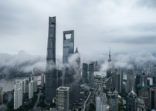Regardless of when headline rates of inflation begin to decline, there are emerging concerns among market participants that inflation will remain an issue for longer than many would like.
It climbed to 7% year-on-year in March 2022, the highest recorded rate in almost four decades. Further, headline rates of inflation are above central banks’ targets in almost every major developed and emerging market economy.
Schroders pinpoints China’s zero-Covid policy, rising commodity prices and a resurgent service sector as three key reasons why inflation isn’t going away anytime soon.
As a result of these risks, the UK fund house has revised up its forecast for global inflation this year to 6.4%, from 4.8% previously.
“Although we still expect inflation to decline next year, it will probably do so more slowly and we have revised up our forecast to 3.6% in 2023 from 2.8% previously,” said David Rees, senior emerging markets economist at the firm.
Living with inflationary risks
One of the key reasons why Schroders expects prolonged inflation is China’s continued zero-Covid policy. This means supply chain bottlenecks are likely to persist for some time.
“The imposition of lockdowns hit China’s economy in April and economic output is likely to contract in the second quarter compared to the previous quarter,” explained Rees.
Despite being a drag domestically, the knock-on effect on the rest of the world from lower manufacturing activity and a logjam in transport infrastructure cannot be under-estimated given China’s central role in global supply chains.
“There have been signs that supplier delivery times will lengthen and there is a risk that supply chains will deteriorate,” added Rees.
Meanwhile, commodities are a second cause of concern in relation to prolonged inflation.
Although energy prices have stabilised since the initial shock to markets following Russia’s invasion of Ukraine, these prices remain high and could even rise again amid geopolitical tension and more potential sanctions that are affecting gas supply in Europe.
Food prices also pose a big threat, believes Schroders, which points to the UN’s FAO Food Price Index to show that prices have already climbed by about 20% so far this year in nominal, US dollar terms.
“The huge price shock in the fertiliser market means there is a risk that higher food costs persist,” said Rees. “After all, Russia and Belarus have historically been important sources of fertiliser for the global economy.”
Beyond Russia’s influence, climate change is also affecting crop production in certain key markets, such as India. “This is a particular threat to the emerging markets, where food accounts for a relatively large proportion of CPI baskets and past spikes in prices have provided the spark for social unrest, such as the Arab Spring in 2010,” added Rees.
The third driver of Schroders’ inflation outlook stems from the rebound of the services sector as consumption returns in the wake of Covid-19.
Incoming data from the UK, for example, as the first major economy to abandon Covid restrictions, are showing this demand shift. And US service sector output is now returning to pre-pandemic levels, with Schroders forecasting further growth.
“A resurgence in service sector demand is likely to require more workers at a time when unemployment is already very low and wages are rising,” explained Rees. “This raises the risk that services could soon take over as the key driver of inflation to add to fears of a wage-price spiral.”

















